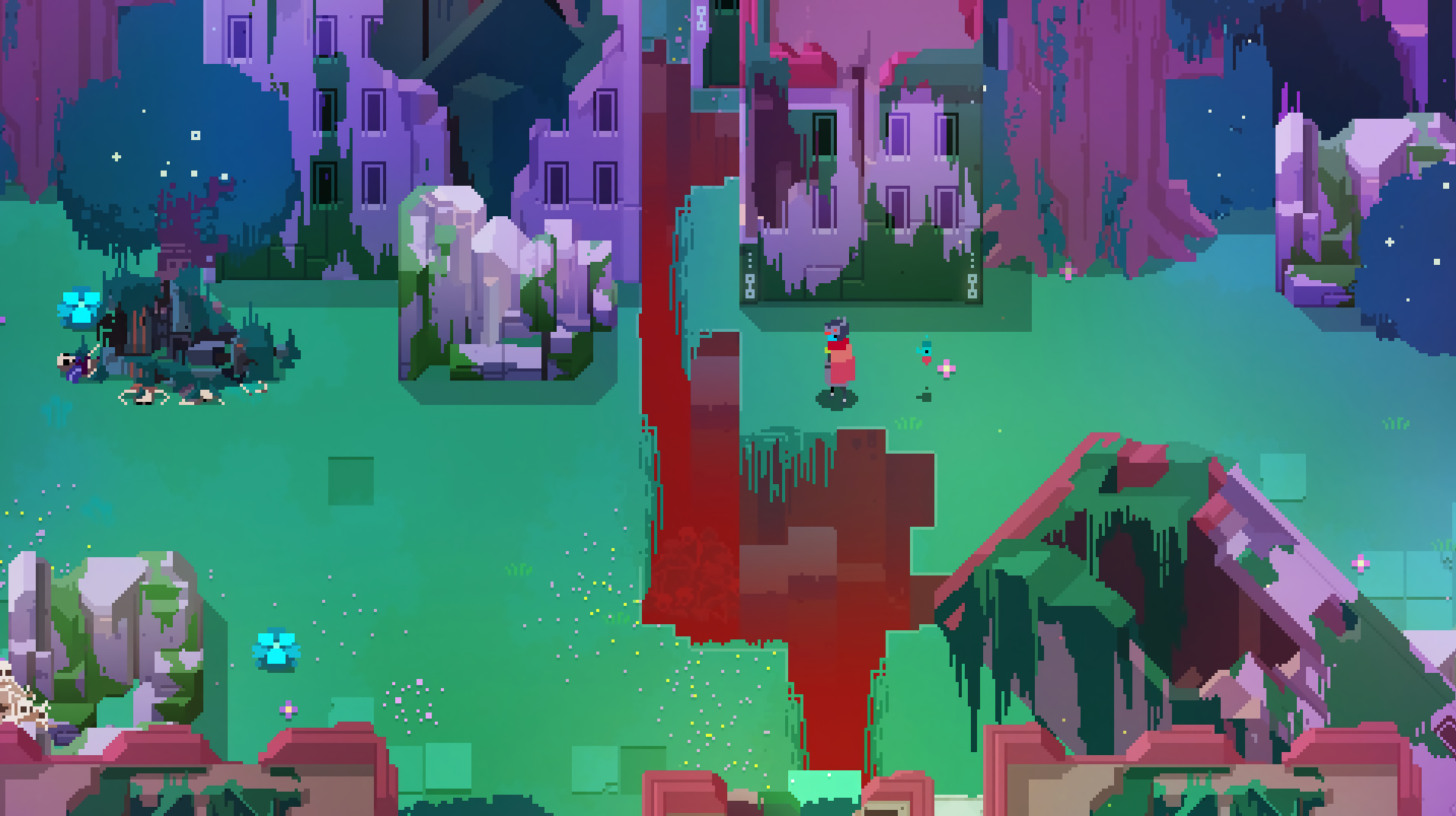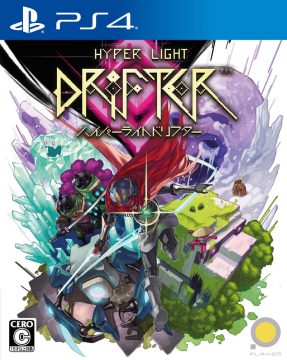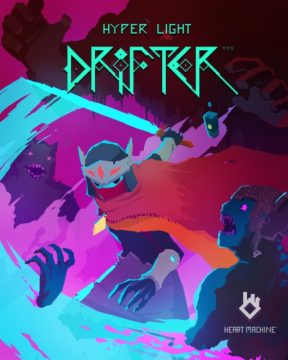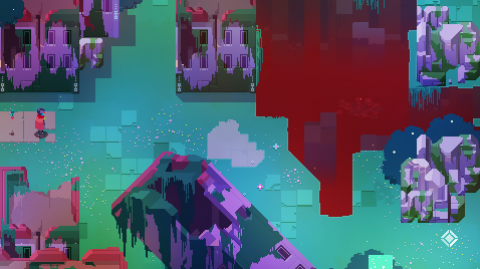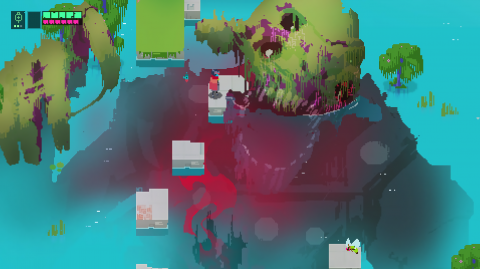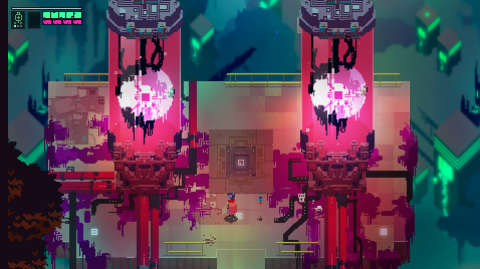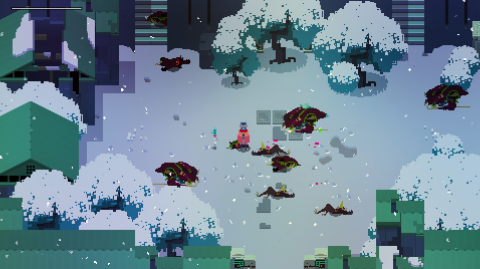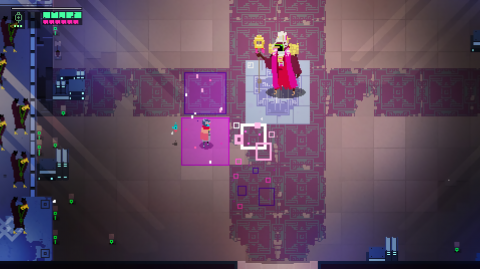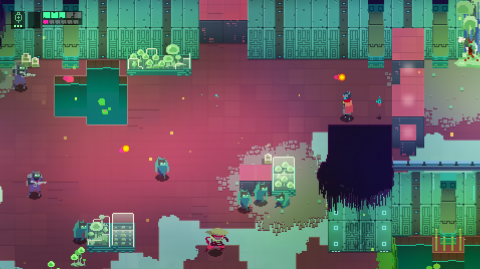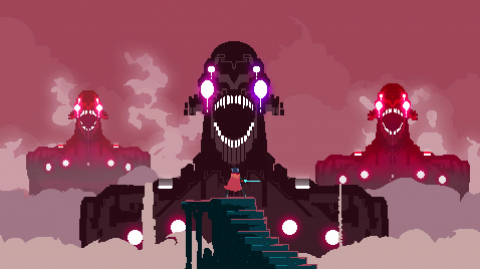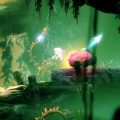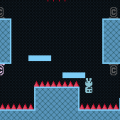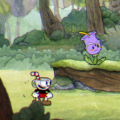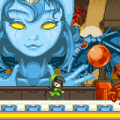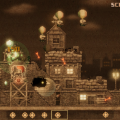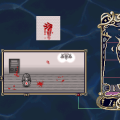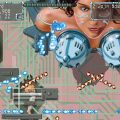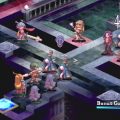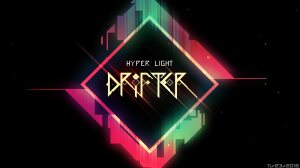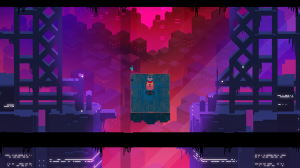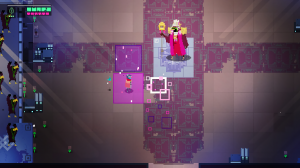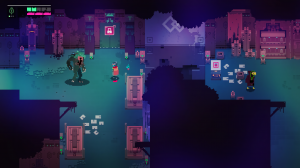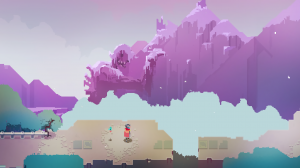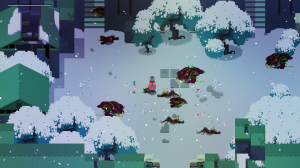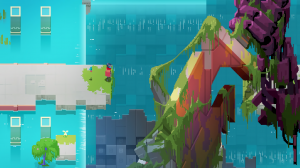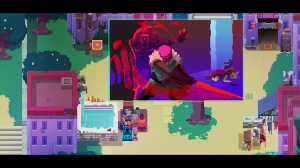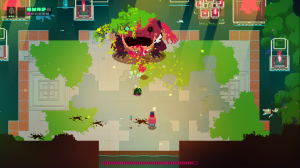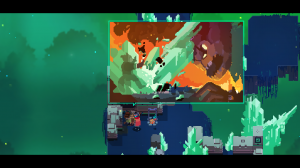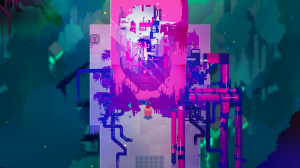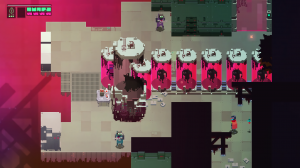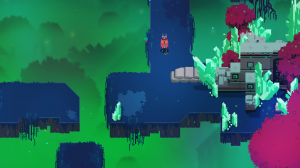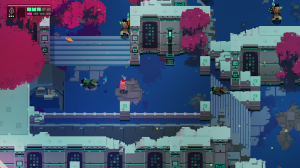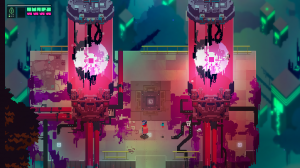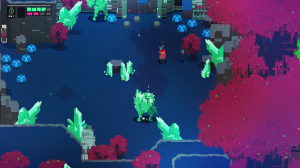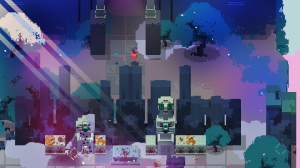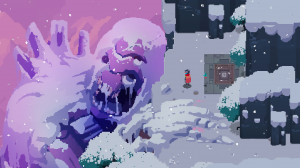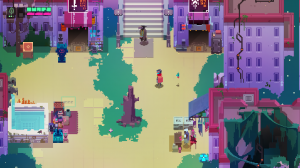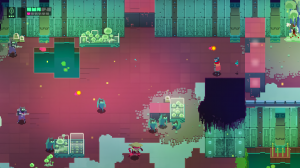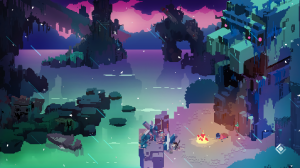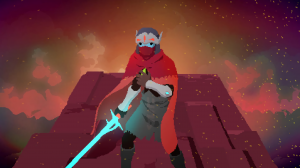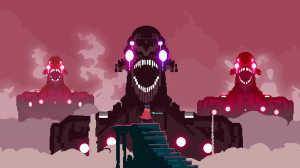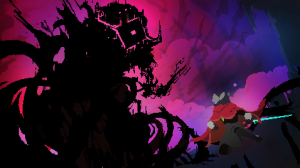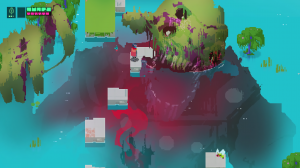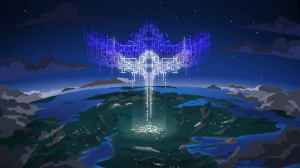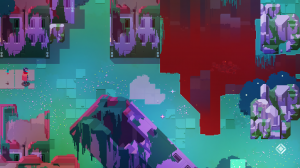With the indie game renaissance, one of the favorite subgenres of developers has been the Metroidvania, otherwise known as a side-scrolling exploratory platformer. What’s curious is how few games took after the overhead action-RPG style game, popularized by the Zelda series. Heart Machine’s Hyper Light Drifter recalls that latter type of game, though with a distinctly modern perspective combined with incredible visual panache.
The story begins with an impressive animated sequence, drawn entirely with pixel artwork and showing the cataclysmic events that destroyed the world of the game. It also introduces the hero, technically nameless, but referred to as the “Drifter”. This sequence is deliberately enigmatic, but it shows the key elements of the land you’re about to explore – a dying world, with oceans of blood and littered with corpses, attacked by legions of giants straight out of the anime classic Nausicaä. The Drifter, himself suffering from a terrible sickness, puts up an admirable fight but seems to succumb to the attack. He awakens on top of a mountain, still coughing up blood but otherwise alive, before setting off on his adventure.
There’s no dialogue in Hyper Light Drifter. There’s almost no text, either, other than the interface and a few necessary system messages. Indeed, even after the introduction, it’s not entirely clear what’s going on, other than that there are doors to unlock, keys to find, and monsters to kill. There are a few other adventurers and people to talk to, but even their “speech” is displayed entirely through comic book-style illustration bubbles.
Conversely, this makes the game a little directionless in the beginning. Once you awaken after the intro, it’s a short walk to the local town, which acts as a hub, smack dab in the center of the world. There are four directions you can walk in (though only three are unlocked), and you can conquer them in any order. The only clues come in the form of an Egyptian-like dog, who will occasionally pop in to lead you in certain directions.
To the north lies a snow-covered mountain, ruled by a bird-like race (again, using Egyptian imagery). To the east are a gigantic lake and the ruins that surround it. The west has a forest made of crystals. Finally to the south is a desert, featuring a gigantic laboratory. Additionally, there are several underground zones in each area, some short, others spanning multiple screens. Though the Drifter can’t jump, he can dash, which lets him zoom over the air. There are often many suspended pits and platforms you need to navigate over, though the game is generous enough so that it’s hard to accidentally walk off the edge of a platform.
It’s important to note that, while the game is vague and seemingly open-ended, it’s actually pretty difficult to get lost. Most of the overworld areas have a linear route from the beginning to the end, often taking you below the earth and then back up above ground, with a few branches that lead off to optional areas. The main goal is to find four modules in each area. These are used to open up the door to the boss, which will in turn get you one step closer to unlocking the gigantic circle in town, leading up to the final encounter.
In addition to providing some cryptic backstory, NPCs in each area will both reveal the location of the boss, and the general area of each of the quadrants, so you’re always given some kind of guidance. However, the map system makes it a little difficult to read. Almost all of the quadrants are underground, and even though they’re shown on the overworld map, you won’t know how to directly get there unless you follow the maps and look for its entrance. The map doesn’t show your precise location, either, only the “room” you’re in. It’s particularly confusing due to the way the world is laid out, as it seems like you make huge jumps from one end of the map to the other whenever you progress to a new area. Once you study the scenery, though, you can get a better grasp of where you are and where you need to go. Even though it initially seems obtuse, it’s a good way to give the game some structure without leading you by the nose.
Indeed, one of the biggest strengths of the game is the way it sneers at the overtly tutorialized nature of some of the modern Zelda titles (particularly Skyward Sword). It’s a game where you’re expected to explore and learn how the system functions, how the world operates, and how the plot fits together, without having it spoon-fed to you. The downside is that this gives the impression that the game is more difficult than it really is, and part of that is due to the way it ignores certain video game conventions. Since you can walk in any of the three directions when you start, it implies that each is roughly the same difficulty, but nope – the eastern and northern branches are much easier than the western one, and God have mercy on the soul of any newbie that happens to wander in that direction before they’re prepared. It’s not completely a matter of being improperly leveled, either. There are only a few enhancements you can buy, and no real experience levels to advance. Instead, it’s about learning how the combat and the game itself works.
Still, the game in general is more difficult than most action-RPGs. In titles like Zelda, Ys, or any number of classic 8/16-bit games, the combat with general enemies is simple but fun, with the challenge mostly coming from the boss battles. Hyper Light Drifter is much more demanding, taking some inspiration from From Software’s Soulsbourne (Dark Souls and Bloodborne) series. Your primary weapon is your sword, which is fast but still requires deliberate timing. The enemies are just as fast as you are, and are barely stunned by your attacks, so you can’t just mash the attack button and expect to win. You also have a variety of guns, which are tough to aim, but can be used in conjunction with your sword slashes to inflict additional damage or attack from a distance. You can only shoot a few rounds at once, but they’re automatically replenished when you kill enemies. You can also dash, which is essential. Much of the combat involves chipping away at an enemy’s health while dodging their attacks, and often trying to defend yourself from multiple foes at once. Most enemies can be killed in two or three hits, but when they gang up on you, especially if one of them uses a projectile weapon, it can be hectic to engage everyone while avoiding being attacked yourself.
Your life meter is extremely small, with just five blocks, and some enemies can take away two in a single swipe. You’re given a limited number of first aid kits – three at first, upgradeable to five – that will completely rejuvenate your health. However, these leave you temporarily vulnerable whenever you use them. Replenishments are thankfully littered around the land, though they often require a bit of exploration to look behind scenery or explore off the beaten path.
While the game can be tough, it’s generally fair. Even though death may be frequent, you have unlimited lives, and you always respawn at the entrance to each room, so the penalty for failure isn’t that harsh. The game also records the state from when you entered the room, including the enemies and your remaining health and first-aid kits. This proves to be a problem if you enter an area with no first aid kits and low health, because that’s what you’ll respawn with. Technically you can walk backwards and try to find any first aid kits you may have missed, but they’re limited in number (and only replenish after you’ve wandered far enough away, plus it regenerates the enemies too), so you might just have to make do with whatever you have. That can mean beating an entire area without getting hit at all, depending on how severely wounded you are. It makes sense why the game was designed like this – simply respawning with full health would’ve trivialized the limited supply of health restoratives and make the game too easy – but surely there would’ve been more first aid kits placed at room entrances to reduce this from happening.
The other side of this issue is that it forces you to rationalize the use of every first aid kit, to avoid getting in these situations. If you make it to the end of an area but feel you’ve wasted too much health, it might be a better idea to just jump off into a pit until you die, respawn, and try to do a better job on the next attempt.
Though the main goal is to find four modules in each area, there are extras in each area, so you don’t need to find all of them. There’s tons of other hidden stuff to rummage for, too. Yellow gear bits will let you purchase upgrades in the town. Keys let you open up various doors peppered throughout the land, and there are several hieroglyphs to find, too. There’s actually a whole lot of hidden content to find, though outside of the disks, none of it is really essential. Indeed, given the obtuse nature of the map system, it can be extremely difficult to remember where locked doors are found, so good luck retracing your steps once you’ve found enough keys to actually open any of them.
Other than increasing the amount of first aid kits to find, the other upgrades let you expand your ammo stash, or give you various sword or dashing abilities. These are all pretty nice, particularly the sword dashes, which let you slice through multiple foes at once, and inflict greater damage on larger foes. Plus, the skills that let you deflect bullets are practically essential for some boss fights. The dash abilities are cool, too, as they let you string together several moves to turn yourself into something resembling a ninja. In keeping with the deliberate timing of the rest of the combat system, though, you can’t just mash the button. You need to press it in a specific rhythm. Unfortunately, it’s very difficult to determine what this rhythm actually is, as it’s not closely connected to any animation frames or sound effects. It’s just something you need to get a hang of through practice. There’s actually an insanely difficult trial where you need to perform 800 of these chain dashes, which requires not only incredible rhythm but also thumbs of steel. The reward for this is nice – an item that halves the stamina consumption of these special skills – but this is practically out of reach for mere mortals. There are other small goodies and outfits to find for completionists, or for beating some of the game’s added modes.
Beyond its solid combat system, Hyper Light Drifter‘s other strength lies in its world design, and more importantly, its aesthetics. It uses high resolution pixel artwork but isn’t interested in replicating the retro style of most other indie games. Instead, it’s deliberately jagged but exceptionally well animated, with its closest comparison being the likes of Capybara’s Sword and Sworcery or Super Time Force, but even then it looks drastically different. Most areas are dominated by simple color schemes. For example, the western route features dark green grass, red skies, and light green crystals. The tiles radiate with all colors of the spectrum, though, and the visual designers simply love sunbeams, which are placed pretty regularly. This type of shading gives the game a much darker feel than many 2D pixel-based games, even though it relies on primarily colors.
It’s not just the general color scheme that gives Hyper Light Drifter its identity, but the skill and care that each area is rendered with. The overworld is filled with incredible details, most of which flesh out the backstory. Granted, there’s not much to the story other than “there were evil giants around the land, something killed them, and now their corpses are everywhere”, but it still creates a landscape that feels rich and alive despite being a destroyed wasteland. It gets even weirder when you start exploring underground labs and wander across all of the biological equipment used to create these giants, particularly the room that has two gigantic eyes, floating in red liquid, staring at you. This is the sort of game where it’s hard to not to wander through every room and take screenshots of everything, then flip through them later on as mementos from your journey through this strange and enthralling world.
However, while all of the overworld areas are perfectly detailed, many of the underground zones are more generic, seeming like they were constructed out of tiles rather than carefully designed. It’s logical from a functional perspective – underground areas would be constructed with more care than a haphazard natural landscape – but it also makes these sections far less interesting to explore.
The world is made even more intriguing thanks to the music by Disasterpeace. Much like his previous work on the Fez soundtrack, it mostly consists of ambient chiptune-style music, but it accentuates the loneliness of a broken world. The fast paced songs kick into gear during the boss fights, and while these don’t occur very often, they’re still excellent when they pop up.
Like many of these indie games, Hyper Light Drifter was funded via Kickstarter, with a physical edition released by iam8bit, which includes a colored SNES cartridge (though it’s just an empty shell). At its initial release, it was criticized for its high difficulty level and 30 FPS frame limit, which looked pretty bad for a 2D game, but subsequent patches introduced an easier mode and a much smoother 60 FPS. (There’s still an option for 30 FPS if you want to see how it was when it first came out, just to appreciate the end result of several months of tweaking to get it to run at a higher frame rate.)
There’s some truth to the idea that maybe Hyper Light Drifter is a little too vague at times. It might put people off at the beginning (and looking at some of the reviews and impressions reveals that it does), and the cloudiness of the storytelling obfuscates the fact that it’s actually a fairly simple plot. Still, it’s essential to understanding the appeal of this game. You’re an outsider exploring a post-apocalyptic world, and the lack of direct communication adds to the feeling of isolation. This contrasts with the beautifully rendered art style, which further juxtaposes with the grim setting. Together with the incredibly tight combat, it coalesces into an essential experience, one that recalls works from the classic 2D era, but is also entirely distinct from it.
